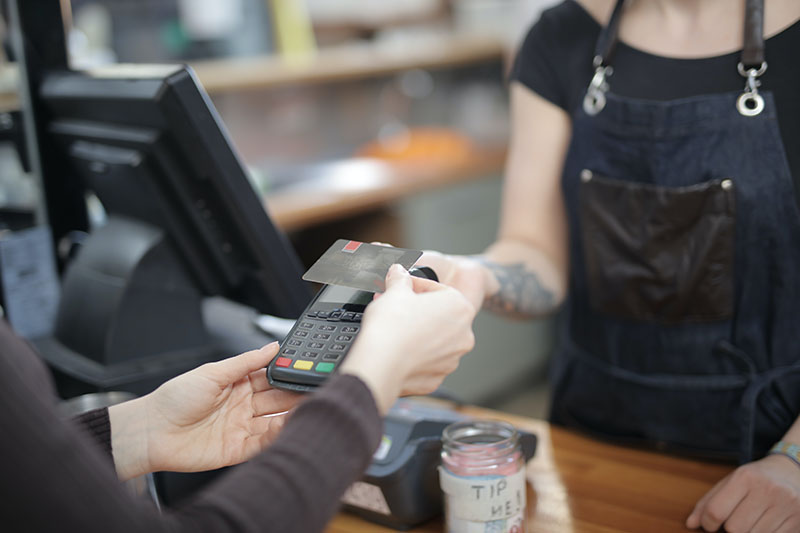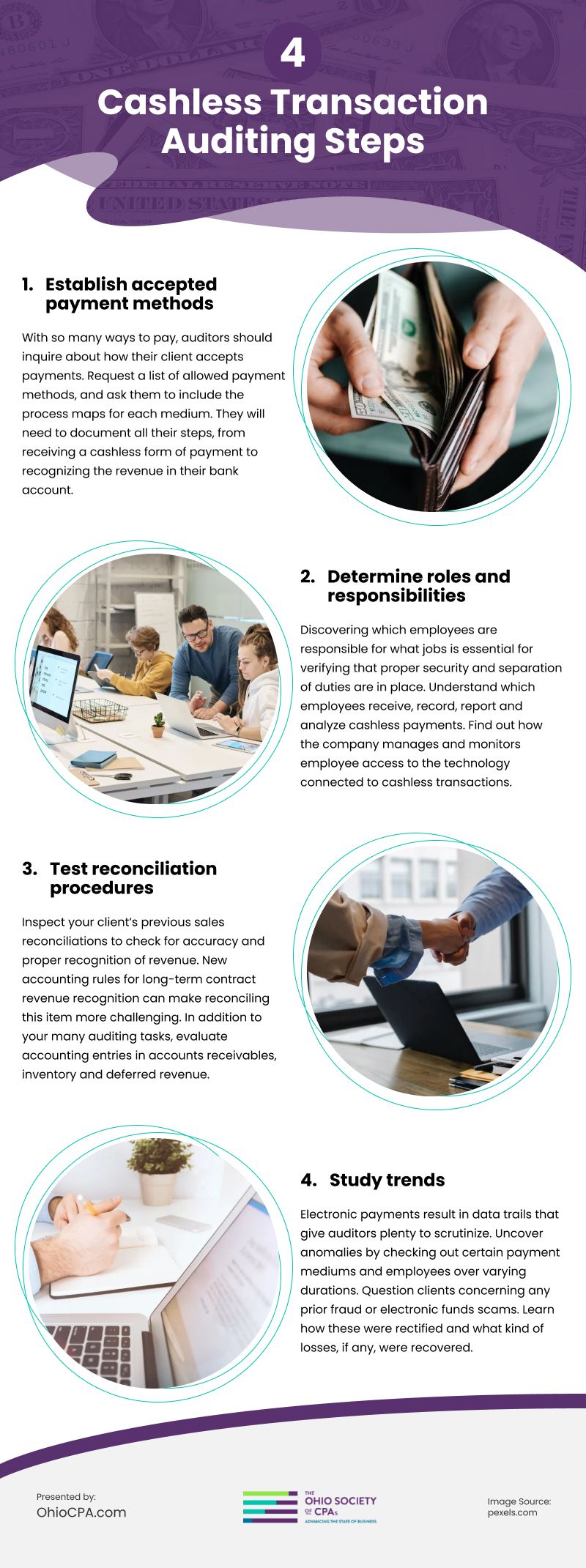
(Andrea Piacquadio / pexels)
Cashless payments are so commonplace these days that using paper money to buy goods or services can raise suspicion. By making the switch to cashless payments, business owners can earn more customers.
Swifter and easier than counting out bills and coins and more secure than a wallet chain, our cash-free economy has eased some spending and saving woes. It increases transparency and accountability of expenditures while making transfers more effortless to record.
However, this Pandora’s box of payment systems always comes with some drawbacks. In this case, there are some advanced security concerns. And an organization can open itself up to vulnerabilities of internal fraud if they have weak controls or insufficient separation of duties. Not to mention, cashless payments can exclude economically disadvantaged populations who rely heavily on cash.
Four steps for auditing cashless transactions
In our new age of digital exchanges, we hardly trade physical cash anymore. That might leave many an accountant wondering: “How do cashless transactions affect auditing?” With so many ways to collect a cashless payment, auditors must gather and track their client’s electronic sales records from many different sources. That task can be very laborious.
But by following an action plan like the four-step process below, accountants can make sure they are adequately amassing and examining necessary records.
Accountants must:
- Establish accepted payment methods
- Determine roles and responsibilities
- Test the reconciliation procedure
- Study trends
1. Establish accepted payment methods
- PayPal
- Venmo
- ACH
- Credit cards
- Debit cards
- Cryptocurrency
- BNPL (Buy Now, Pay Later)
- P2P (Peer-to-Peer) payments
- Digital wallets
- Bank-to-bank transfers
Auditors should start by asking the client for a list of allowed payment methods, including the process maps for each medium. Clients will need to document all their steps, from receiving a cashless form of payment to recognizing the revenue in their bank account.
***Bonus tip: Auditors might find it extremely helpful to create and send an email template to clients in advance of the audit, requesting that the client assemble the information prior to the auditors’ arrival. Your proactive approach will ensure that everyone can hit the ground running when you begin the audit.***
2. Determine roles and responsibilities
Discovering which employees are responsible for what jobs is essential for verifying that proper security and separation of duties are in place. Understand which employees receive, record, report and analyze cashless payments. Find out how the company manages and monitors employee access to the technology connected to cashless transactions.
3. Test reconciliation procedures
Inspect your client’s previous sales reconciliations to check for accuracy and proper recognition of revenue. New accounting rules for long-term contract revenue recognition can make reconciling this item more challenging. In addition to your many auditing tasks, evaluate accounting entries in accounts receivables, inventory and deferred revenue.
4. Study trends
Electronic payments result in data trails that give auditors plenty to scrutinize. Uncover anomalies by checking out certain payment mediums and employees over varying durations. Question clients concerning any prior fraud or electronic funds scams. Learn how these were rectified and what kind of losses, if any, were recovered.
Successful auditing of cashless payments
The four-step process for auditing cashless transactions is a guide for auditors to use as they navigate their client’s many cashless transaction options. Though four steps may seem like a short process, it’s clear the actual procedure is anything but.
With so many ways to transact business with customers and vendors, it’s essential to leave no stone unturned when following the data trail. The four steps are small in number but big in impact.
Infographic
In today's digital world, physical cash is becoming less and less common in our transactions. This shift towards cashless payments has raised concerns amongst accountants regarding how it affects the auditing process. Accountants can ensure they adequately collect and analyze necessary records by following this infographic's four cashless transaction auditing steps.

Video